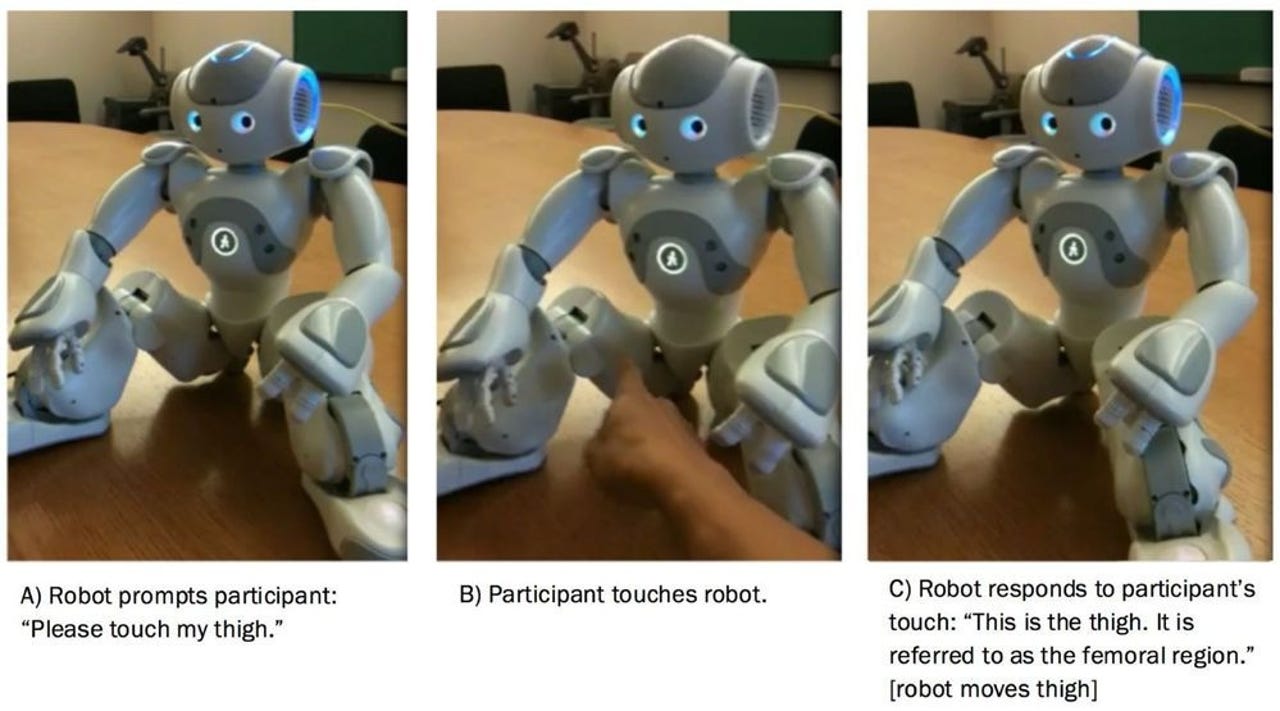Touching robot privates turns people on


It's official: People get turned on when they touch anthropomorphic robots in the equivalent of their genitals.
Robotics
I'm not being crass ... it's science. That's according to Stanford University researchers, who published a new study on how people react when a mechanical companion asks them to touch its private parts.
In a video accompanying the announcement (which hopefully no savvy high schoolers get hold of) researcher Jamy Li explains how he programmed his NAO robot to touch it in several places on its body, most of which would not be considered inappropriate, a few of which would.
Each time someone touched the area, the robot would bark the proper name of the region.
So what's the point? Well, we're rapidly approaching a near future when robots and humans will interact with regularity. One of the big changes in robotics in the last couple years has been a series of developments that have made bots more collaborative. We're seeing this in manufacturing and logistics industries. Previously, robots were confined to cages and workers were kept far away. Thanks to advanced force sensors and intelligent path planning, bots have come out of the cage to work alongside humans.
Industrial technology often gives birth to consumer technology, and that's starting to happen with collaborative humanoids. Companies like Aldebaran and initiatives at the newly formed Toyota Research Institute are exploring the use of robots in elder care. Because robots that care for people in their homes or in hospitals have to navigate environments designed for humans, it makes sense that they should look and move like humans.
So what does this have to do with getting frisky with robots? Well, get ready for an ethical can of worms. The idea of robot partners--and I'm using that word in all its sexually loaded glory--is nothing new. Movies like Her and Ex Machina have explored the subject, and writers like David Levy, who wrote the book Love and Sex With Robots, predicts that marrying robots will be common by 2050. That's particularly relevant for cultures with a sizable gender disparity, such as China.
So if the brightest roboticists aren't yet working on "companion" robots, the collaborative technology they're developing will certainly be used for that purpose. From a sociological vantage, it'll be fascinating to see if cultural norms change with the introduction of technology, which, like it or not, is usually the case.
The paper will be presented in June at International Communications Association Conference. It hasn't been peer reviewed yet, but it's enjoying a healthy circulation online. Clearly the topic has -- ahem -- touched people somehow.